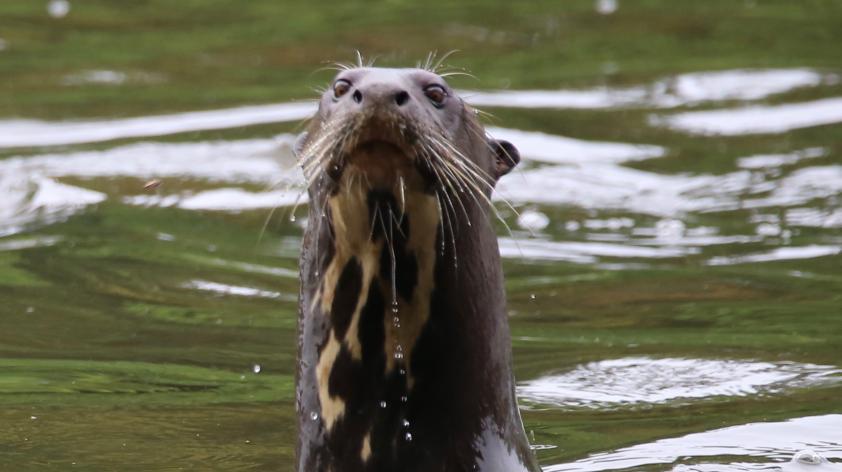
Discovering giant otters
It’s good to be back in Cocha Cashu and exciting to be launching a new program with one of its most charismatic denizens, the giant otter. Giant otters, nearly 6.5 feet (2 meters) long, are the icons of Amazonian waters, probably because they are highly intelligent, have social dynamics suitable for a reality show, often displaying noisy antics for the amused observer; and of course, because of their magnificent size and elegance. They also have a voracious appetite for fish, consuming one every few minutes, it would seem, as we watch them from our canoe. They are the co-royalty of the aquatic system in southeastern Peru, sharing that honor with their fierce competitor, the black caiman
We are starting our study here, not because they are beautiful and amazing creatures, but because giant otters face some significant challenges and are, sadly, at risk of extinction. Once nearly exterminated by the fur trade, their numbers have been on the increase in recent years.
But it now appears they have traded one big risk factor for a suite of smaller ones. Possible threats include conflict with fishermen, diseases introduced by domestic animals and poorly managed tourism. The more ominous risk factor is gold mining, which is on the rise throughout the Amazon, even in places almost as remote as Cashu. Gold mining leads to habitat destruction, but also to mercury contamination, since processing of gold expels mercury as a byproduct. We are here to get out in front of this problem, and determine if the giant otters of the Madre de Dios region are at risk.
Our Cocha Cashu field station will be the main base of this new study into the threats endangering giant otters. But Cashu is located deep inside Manu National Park, where thankfully most of these threats don’t reach. Not all the otters of the region, unfortunately, benefit from this protection, so we will be investigating otter ecology and behavior across a dozen or more oxbow lakes or cochas—their favored habitat, created when a stretch of river is cut off and isolated—inside and outside the park. Some will be affected by human activities, some will not, creating an ideal opportunity to learn how human activities are impacting otters.
This is why I am here with Adi Barocas and Jessica Groenendijk. Jessica is our employee at Cocha Cashu, and a giant otter expert, with a long history of working with the species, and Adi is our newest “postdoc” who, though very familiar with North American river otters, is new to the giant otter. It was exciting to be here with him when he saw these otters, more than twice the size of the ones he’s used to, for the first time. We have been enjoying the past couple of weeks boating up and down the rivers in and near Manu looking for the best set of lakes in which to conduct our research. Our plans are to study not only the otters, but also the fish and water quality on which they—and many other species, including humans—depend.
Soon Jessica and I will return to our homes, but this will be Adi’s new home. He will spend the next five years here and no doubt make some fascinating discoveries about giant otters, and help save them from extinction.
The giant otter project is a collaboration between multiple organizations, including Oxford's Wildlife Conservation Research Unit, Wake Forest University's Center for Amazonian Scientific Innovation, and Manu National Park.













